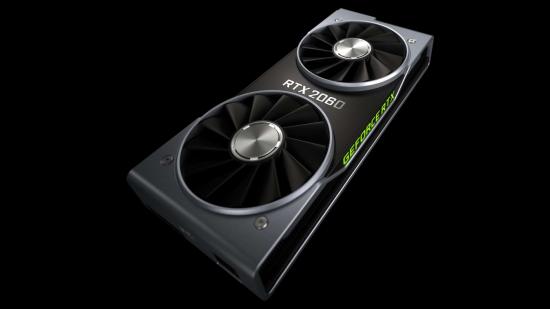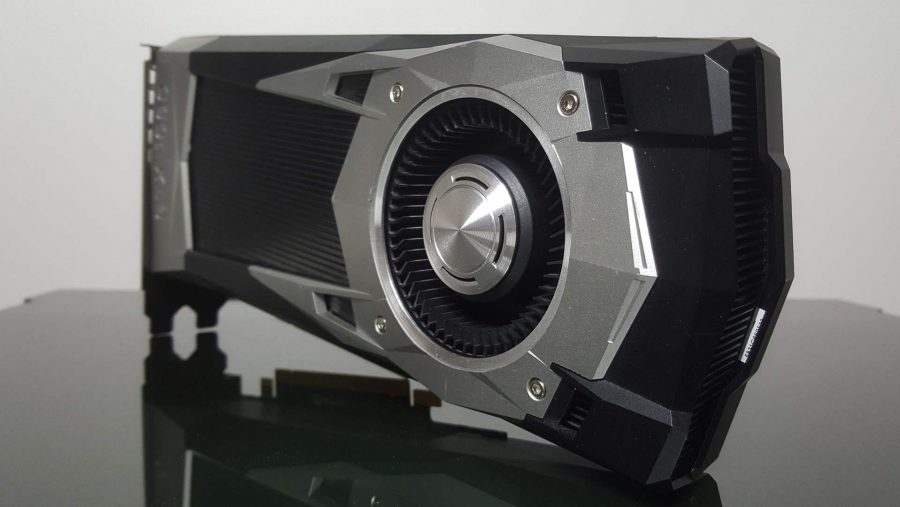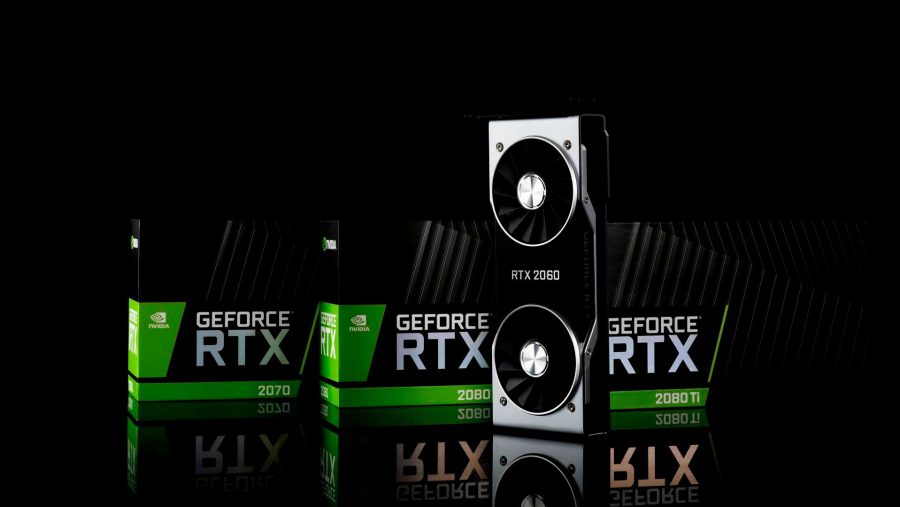The Nvidia RTX 2060 is all set for a CES 2019 launch this month… but which version of the RTX 2060 will Jen-Hsun be waving about on stage in Vegas? With the different memory configurations being touted around it’s entirely possible that we’ll see at least two RTX 2060 cards with different versions of the TU106 GPU when it actually hits the shelves.
According to a recent Gigabyte filing with the Eurasian Economic Commission (EEC) the company is potentially creating 39 different SKUs of the new ‘mainstream’ Turing graphics card, across six different memory configurations. There is set to be the standard 6GB version – which is the one we’ve seen in all the leaked specs so far – but the EEC filing suggests there will also be 4GB and 3GB variants too.
Not only that but Gigabyte is also looking to split the memory configurations further by offering the 3GB, 4GB, and 6GB cards in both GDDR6 and GDDR5 flavours too. There has been some speculation that it might actually be GDDR5X, which we think is pretty unlikely – the only reason to offer versions without GDDR6 would be because of its high price, and using GDDR5X isn’t going to change that a whole lot.
German site 3DCenter has dug into the relative pricing of Micron’s GDDR6 memory, versus the same capacity of GDDR5 modules, and has found pricing differences of around 70%. Of course GDDR6 does offer around twice the bandwidth of GDDR5 – so you are getting something for that extra expense – but it shows somewhere manufacturers could save cash, and be able to offer more affordable versions of the RTX 2060.
That means there could actually be genuinely mainstream RTX 2060 cards coming out via the third-party graphics card manufacturers.
The hoary ol’ GTX 1060 chestnut from the Pascal generation had more configurations than there are reasons to be depressed at the start of this economic and ecological collapse-filled year ahead. It’s had different memory setups, from 6GB through 5GB and down to 3GB, and almost more importantly it’s had altered GPU specs too. Whether that’s a switch to a chopped-up GP104, or a hobbled GP106, Nvidia has shown a willingness to mess around with the mainstream GPUs to squeeze them into different price points.
And so it follows the RTX 2060’s TU106 GPU isn’t necessarily going to remain at the same 1,920 CUDA core count we’re expecting the standard 6GB card to arrive with. The 3GB version should still be able to run on the 192-bit memory bus the 6GB version is reportedly shipping with, but it wouldn’t be that much of a surprise to see Nvidia lopping off a couple of SMs from the GPU.
| RTX 2060* | GTX 1060 | GTX 1060 | GTX 1060 | GTX 1060 | |
| GPU | TU106 | GP106 | GP106 | GP104 | GP106 |
| Die size | 445mm2 | 200mm2 | 200mm2 | 314mm2 | 200mm2 |
| Memory | 6GB | 6GB | 3GB | 6GB | 5GB |
| VRAM type | GDDR6 | GDDR5 | GDDR5 | GDDR5X | GDDR5 |
| Memory bus | 192-bit | 192-bit | 192-bit | 192-bit | 160-bit |
| CUDA Cores | 1,920 | 1,280 | 1,152 | 1,280 | 1,280 |
| SMs | 30 | 10 | 9 | 10 | 10 |
| RT Cores | 30 | N/A | N/A | N/A | N/A |
| Tensor Cores | 240 | N/A | N/A | N/A | N/A |
*Leaked spec
Drop down from the expected 30 SMs to 28 SMs and you’re looking at 1,792 CUDA cores. But you’re also going to lose a couple of RT Cores with that too, and that could potentially take the 3GB RTX 2060 below the 5 Giga Rays per Second mark Nvidia has said is the minimum for a good ray tracing experience.
And it’s that which could make this all rather confusing – if the RTX 2060 is heralded as the entry point for real-time ray tracing, but some RTX 2060 cards aren’t actually able to deliver it, then that’s going to mean some real mixed messaging.
But if by offering 4GB and 3GB GDDR5 versions of the RTX 2060 Nvidia is able to bring us a Turing GPU for less than $299 then we’re getting close to having a genuinely affordable 20-series card, which can only be a good thing. Even with 28 SMs the 3GB RTX 2060 is still likely to perform very close to its big brother in standard gaming metrics, and if we are looking at GTX 1070 to GTX 1070 Ti level frame rates then that will become a very tempting card.
The 4GB option is looking a little more of an oddity, however, as it’s not going to be able to operate across the same aggregated 192-bit memory bus. The way its even-numbered VRAM will be laid out means it will more likely have to use a 128-bit memory bus. The current speculation is that Nvidia might use the standard RTX 2060 TU106 GPU and give it higher clock speeds in order to make up for the weaker memory configuration.
That would then give it the necessary RT Core specs to potentially hit that magic 5 Giga Rays per Second mark, and still leave the 4GB 2060 as a genuine RTX-level graphics card, though at a more acceptable price point.
There is at least some sense to all of these setups. Pick the full 6GB GDDR6 config for the top-end RTX 2060, and offer lower-spec GDDR5 variants to allow for cheaper SKUs to be sold into the channel. What doesn’t make sense is to offer those lower-spec RTX 2060 cards with the expensive GDDR6 memory.
If we take it that the switch from GDDR6 to GDDR5 is for pricing reasons why would you then have both options at the bottom level? Surely keeping the top-spec memory for the halo version, and using the older memory tech to cater for the more budget-oriented cards makes more sense.
The saving grace for all this is Gigabyte’s EEC filing doesn’t automatically mean that it is definitely going to create all 39 different SKUs of the RTX 2060. At the moment it has seven different versions of the RTX 2070, 10 SKUs of the RTX 2080 and 10 of the RTX 2080 Ti, and it seems unlikely that Gigabyte would release more versions of the RTX 2060 than the entire of the rest of its 20-series offerings.
It will hopefully all become a lot clearer once the dust has settled on CES and the Nvidia press conference next week, but we’re still holding out hope that multiple versions of the RTX 2060 means well-priced cards that really could be viable replacements for the current swathe of GTX 1060s still floating around out there.
Here’s hoping anyways…



